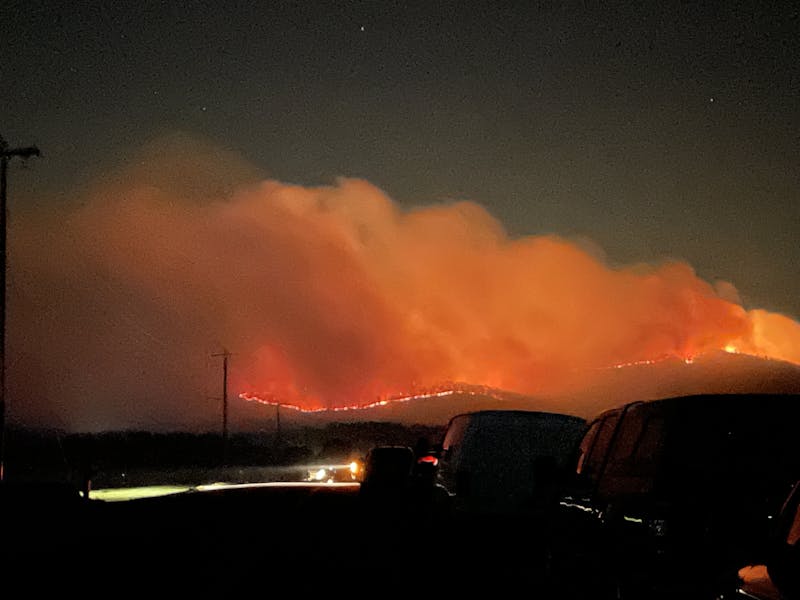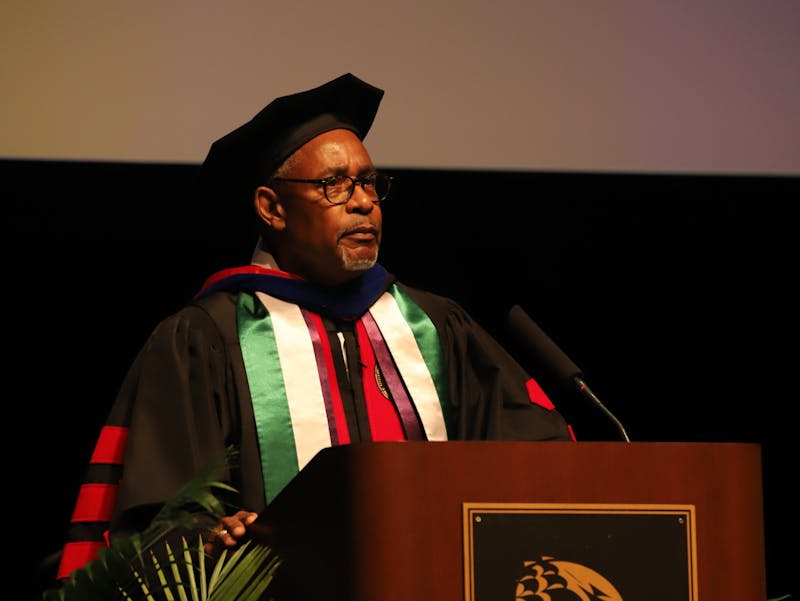The Rev. Dr. Martin Luther King Jr. Rosa Parks. W.E.B. Dubois. Jesse Jackson.
All are synonymous with the African–American Civil Rights movement of the mid-20th century, but there are many others who have been forgotten by history.
Kirk Moll, instruction librarian at Shippensburg University’s Ezra Lehman Memorial Library, presented his years of in-depth research about these forgotten individuals on Wednesday, Feb. 27, to a group of about 25 students and faculty.
The presentation proceeded for 50 minutes, during which Moll told stories, displayed newspaper articles and played video clips of people “connected with, but not publically influential” in the movement.
His main area of work was contained in the Union Theological Seminary, a “center for progressive social action,” in New York City.
“I’m really interested in the way students get involved in social movements,” Moll said.
In his discussion of the seminary, Moll referenced the Group of Eight — a body of Union Seminary students who deferred from the draft upon the United States’ entrance into World War II — and their involvement in organizing passive resistance to social issues of the era.
Another of Moll’s examples involved a 1960 event in which “college students became involved in providing a spark and tremendous energy to reinvigorating the civil rights movement.”
The students he was referring to participated in the first “sit-ins” at F.W. Woolworth Co. in Greensboro, N.C.
During the sit-ins, the students sat at counters until they were served. They never said a word — positive or disrespectful — toward the associates at F.W. Woolworth. Within days there were similar peaceful protests across the nation.
The key individual Moll discussed was Jim Lawson, a man Moll described as “the least-known of the main civil rights leaders — a combination of Mahatma Gandhi and Jesus Christ.’”
Lawson was studying theology in Nashville at the Vanderbilt Divinity School during the introduction of student protests and was eventually arrested because of his involvement. His arrest set a “spark of national attention,” Moll said.
Lawson went on to become one of the founders of the Student Nonviolent Coordinating Committee, an influential peaceful protest organization during the 1960s.
Moll claimed that student newspapers were some the greatest sources used during his research. In these newspapers he found stories of seminary students who got more than a classroom education — they went directly to the South to experience segregation firsthand.
These experiences changed the students, Moll said, and they educated “themselves about race and class and racial sensitivity.”
Moll interviewed 12 of the former students involved and showed video clips from the interviews as the final portion of his presentation in order to “let them talk in their own words.”
“These were people with progressive-minded ideas about race, but ashamed of their own families’ opinions. They knew about segregation from books, but it took their own immersion and sharing others’ experiences [to really imagine it],” Moll said.




The Slate welcomes thoughtful discussion on all of our stories, but please keep comments civil and on-topic. Read our full guidelines here.